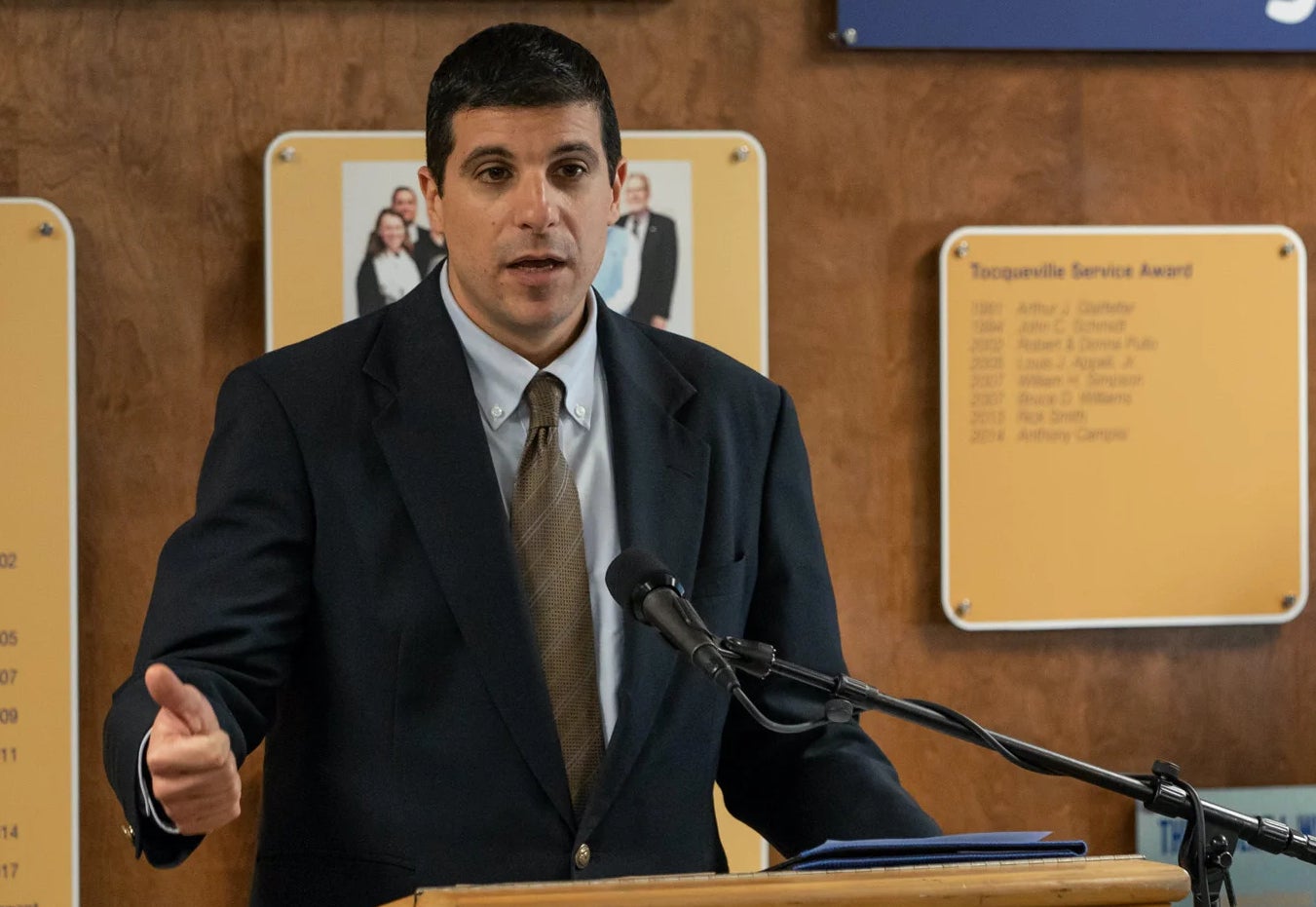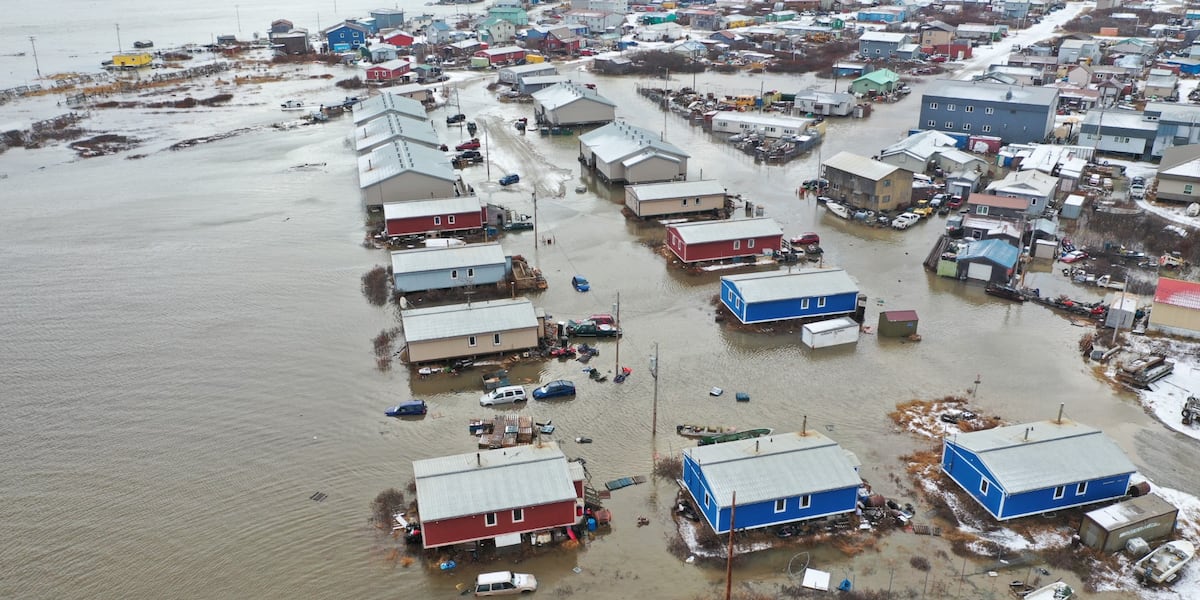The nation’s surgeon general heard from Alaska mental health care advocates on Monday about the need for more resources to address what they say is a crisis that is leading to more suicides, eating disorders and depression among young Alaskans.
Dr. Vivek Murthy said he was in Alaska at the invitation of Sen. Dan Sullivan to learn how Alaska is dealing with the rising rates of isolation and depression that are affecting young people nationwide. He said that nationally, one in three adolescent girls in 2021 seriously considered suicide.
Murthy’s visit comes as Congress looks to shape legislation to limit control of social media use such as Instagram among teens and pre-teens, believed to be a contributor to the issue. It also comes as the federal government is investing $1 billion to increase access to high-speed Internet across the state.
Renee Rafferty, regional director of behavioral health services at Providence Health and Services in Alaska, said in the last 18 months the hospital has seen more youths as young as 10 coming in for help after attempting suicide.
“We are terrified of the statistics that are coming our way,” she said.
The Providence system in Alaska has many services to support behavioral health, but the pediatric medical units are overwhelmed and patients are waiting days to receive the right care, she said. More needs to be done to meet the growing demand, she said.
“We also are trying launch an urgent care for youth,” she said. “Right now if you have an emergency, really there are so many wrong doors. If any of you came to me right now and said, ‘My daughter or my child needs mental health care,’ I would call for hours trying to find you care, and yet we’re one of the biggest providers in the state of Alaska.”
[Loneliness poses risks as deadly as smoking, surgeon general warns]
During the meeting, attended by more than 100 in a packed room at the consortium library at the University of Alaska Anchorage, Murthy heard from caregivers and others who said mental health support in Alaska has improved in some areas.
But they also described a broad shortage of mental health services. They said funding for prevention and earlier intervention is needed to stop crises from arising. They said more flexibility is needed to access reimbursement for behavioral health from federal insurance such as Medicaid. They said more education and discussion about the emotional challenges young people face is critical, to help inform doctors about signs to look out for and to reduce stigmas that prevent youths from talking about their struggles.
Heidi Huppert, chief program officer with Covenant House Alaska, providing shelter and services to teens and young adults, said that since January, the group’s numbers of suicide attempts and suicidal ideation has rivaled those of other Covenant Houses across North America, including New York City, Houston and Toronto.
Huppert said she’s never seen such a crisis in two decades of working at the organization.
“This is an incredible burden on our community,” Huppert said, adding that more services are needed to support the challenges young Alaskans are facing.
Charlotte Cruikshank, a Dimond High School student with Mental Health Advocacy Through Storytelling, a youth-led group that works to increase access to mental health resources, said students are not really taught about how to deal with mental health issues.
She said some students turn to her or other peers for help, but they need support from professionals.
Lisa Parady, executive director of the Alaska Council of School Administrators, said there are great programs for behavioral health in the state’s urban school systems. But there are none in the state’s most rural and remote areas. Many schools have no counselors at all, she said.
[New campaign addresses eating disorders with a message of positivity for Alaska’s young athletes]
“We need to focus on access and equity and a sustained effort to provide resources for student mental health in Alaska,” she said.
Beth Rose, co-founder of the Alaska Eating Disorders Alliance, said there’s been a steep rise in the number of people younger than 17 with eating disorders such as anorexia or bulimia. The disorders have the highest mortality rates of any mental health condition, with many deaths due to suicide, she said.
Treatment requires complex medical care, nutritional support and therapy, but there’s no in-state eating disorder treatment center, she said. Sufferers might get emergency care at a hospital, but other services are lacking. So children are sent out of state to care centers, but they still need help when they return, she said.
“So we really do need to focus on the continuum of care in Alaska,” she said.
Rose said social media is contributing to the rates, affecting kids as young as 9 or 10 who sign up for accounts saying they’re 13, the minimum age for most social media sites. Within minutes, they’re bombarded with sites promoting eating disorders or discussing suicides, she said.
[Meta launches more parental supervision tools for Instagram and Messenger but makes them optional]
Murthy said social media is giving young people the misperception that their self-worth stems from factors they can’t control, such as how they look or their family’s net worth. He issued an advisory in May to draw attention to social media impacts on youth mental health.
Murthy said access to mental health treatment needs to expand. He said it’s important that public programs like Medicaid or private insurance providers cover a full range of services for mental health care, including transportation to care, which is often a big issue for Alaska’s far-flung villages.
Whether a person is LGBTQ+, Alaska Native or a white heterosexual, “you are of equal value to our society and we need our kids to know that,” he said.
Sullivan, who called the youth mental health crisis “the challenge of our generation,” said legislation is in the works to rein in social media sites to better control age restrictions, potentially pushing them to 16, and require that companies release more data about how their sites are being used.
“The way in which the Surgeon General has been talking about this is that, can we be sure that it’s safe for our kids?,” he said of social media. “The answer is absolutely not. We can’t be absolutely sure. So why wouldn’t we want to be putting guardrails on it now to figure this out? If we overshoot, we’re overshooting with regard to protecting our youth.”

:quality(70)/cloudfront-us-east-1.images.arcpublishing.com/adn/RQJ6IB5ZXFBEZGN5SKAPQ5FXXU.JPG)
:quality(70)/cloudfront-us-east-1.images.arcpublishing.com/adn/RMXFC5QRRZBM3END4KJXP2RVUE.JPG)























/cdn.vox-cdn.com/uploads/chorus_asset/file/25822586/STK169_ZUCKERBERG_MAGA_STKS491_CVIRGINIA_A.jpg)

/cdn.vox-cdn.com/uploads/chorus_asset/file/25821992/videoframe_720397.png)




/cdn.vox-cdn.com/uploads/chorus_asset/file/23935558/acastro_STK103__01.jpg)